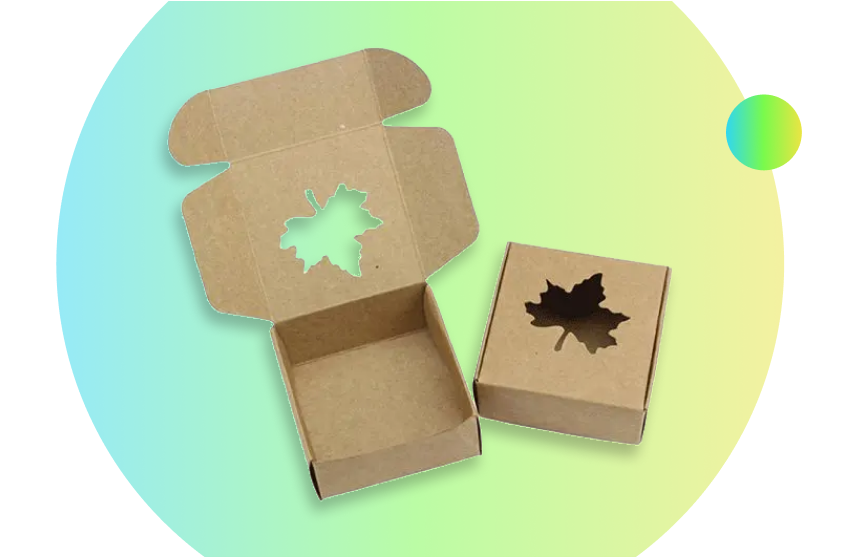The packaging industry frequently employs die-cutting as a manufacturing technique. If you’re not an expert in packaging, you likely have little understanding of the die cutting process.
Don’t worry, you’re not alone!
Die cutting began with letterpress printing and evolved into a more specialized manufacturing process. In the packaging sector, die-cutting involves using a tool known as a die cutter, so what does a die cutter do? It is used to cut materials into various patterns, shapes, and styles.
This technique is primarily used in the production of folding carton packaging, although there are other applications.
Businesses use custom die cut packaging that best fits their brand storytelling and customer experience. Creating custom packaging in larger quantities is simpler, quicker, and more affordable, making it a valuable procedure that benefits both manufacturers and enterprises.
In this blog, we will cover everything you need to know like “what is a die cut?”.
Read More: Discover Various Types of Tape
What is Die Cut Packaging?
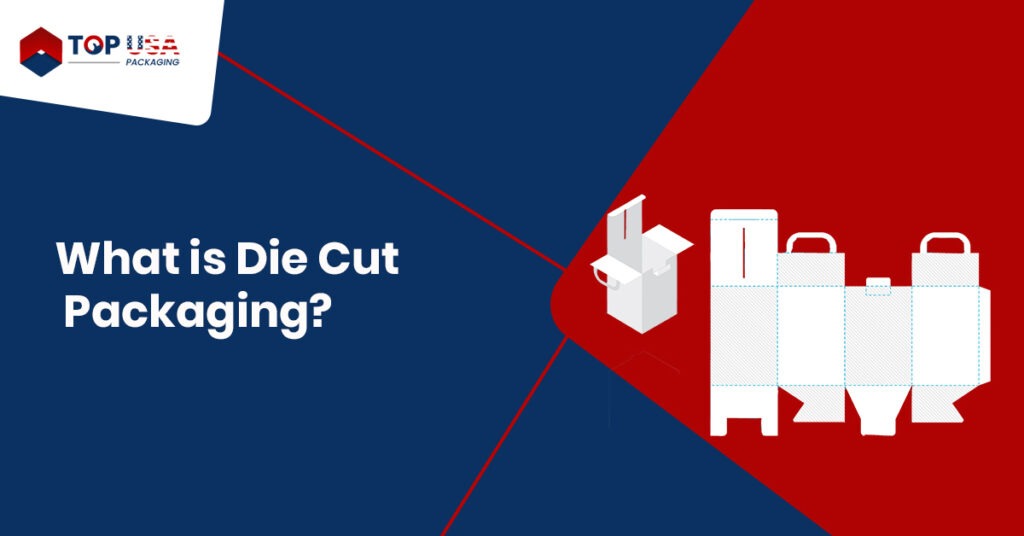
Comprehending the production elements is essential to thoroughly knowing the die cut packaging process.
What exactly is a “die,” in a die cut packaging?
A die is a specialized tool used with a press to cut shapes in packaging materials and to cut packaging inserts. It can be compared to a “mold” customized to cut out unique and luxury packaging boxes.
The formation of a die is typically the first step in creating your unique packaging. Before getting mounted on a press, a custom die is created using die makers and tools.
To start die-cutting your very first batch of corrugated packaging, you should complete the dieline, which is a package template used for die cut packaging.
Can a Die be Used More than Once?
Actually, it is highly recommended!
Creating dies for every packaging design or packaging inserts can be costly, but the investment is worthwhile since it only needs to be made once. Once developed, a die can be reused on the press to produce large quantities of die cut rigid boxes, making it much more affordable for your company.
Imagine having three products, each in the same basic corrugated packaging but with unique artwork for differentiation. You only need one die to create thousands of die cut rigid boxes, die cut mylar bags, die cut gable boxes, die cut cereal boxes and many more.
Die-cutting is a highly efficient method for manufacturing unique custom die-cut packaging, which ultimately becomes a key component of your brand story.
Read More: Perforated Packaging – From Practicality to Brand Innovation
How Die Cut Packaging is Formed?
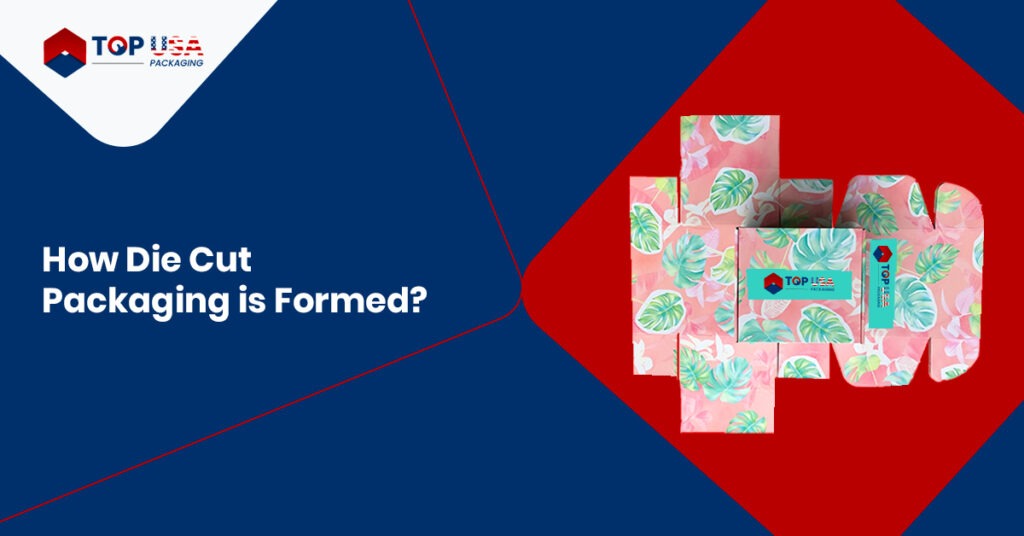
Think of a die-cutter as a big cookie cutter pressed into the respective material to create your custom die cut packaging boxes.
Die cut packaging can be designed more efficiently and precisely due to betterments in manufacturing methods and technology.
Computer-Aided Design (CAD) is usually used to construct packaging outlines, allowing the digital dieline drawings to be transferred to the wooden die board.
To produce more accurate outlines, laser cutters frequently burn the dieline onto the surface of the die board. Thus, make sure the cut lines, bleed lines, fold lines, and safe zones are precisely drawn on your dieline before beginning the die-cutting procedure.
Die boards can now be prepared more precisely and accurately by manufacturers thanks to the use of laser cutters in the die-cutting process. This method works especially well for producing die cut rigid boxes. In addition, die boards are placed under the material for increased accuracy during cutting to guarantee less movement and accurate positioning.
The die boards act as a foundation to preserve precise and straight cuts as the blade slices through the material.
Read Also: Cereal Box Size – All Inclusive Guide
Applications of the Die-Cutting Process
Die-cutting, despite its name, encompasses a range of uses including:
- Perforation: Creates a series of tiny cuts making it easy to tear.
- Through Cut: Completely removes material.
- Creasing: Creates a fold line for simple construction.
- Scoring: Leaves a partial cut, mark, or imprint in a particular place
Each function serves a particular purpose for several packaging materials and many other structural designs.
Creasing is specifically beneficial when creating corrugated packaging and packaging inserts.
Different die-cut foam packaging inserts and rubber pieces are hammered onto the die board along with steel rules to ensure that during manufacturing, the corrugated board is filtered by the die. This ensures the crease lines remain evident and provide a permanent impression to make folding easier.
To cut out a particular form and carry out the pre-programmed actions, the die-cutting machinery powerfully presses the die against the material. The die and die board have identical purposes.
The extra material is then gathered and, if feasible, repurposed!
Read More: Cupcake Packaging Ideas – Complete Ultimate Guide
Die Cutting Methods
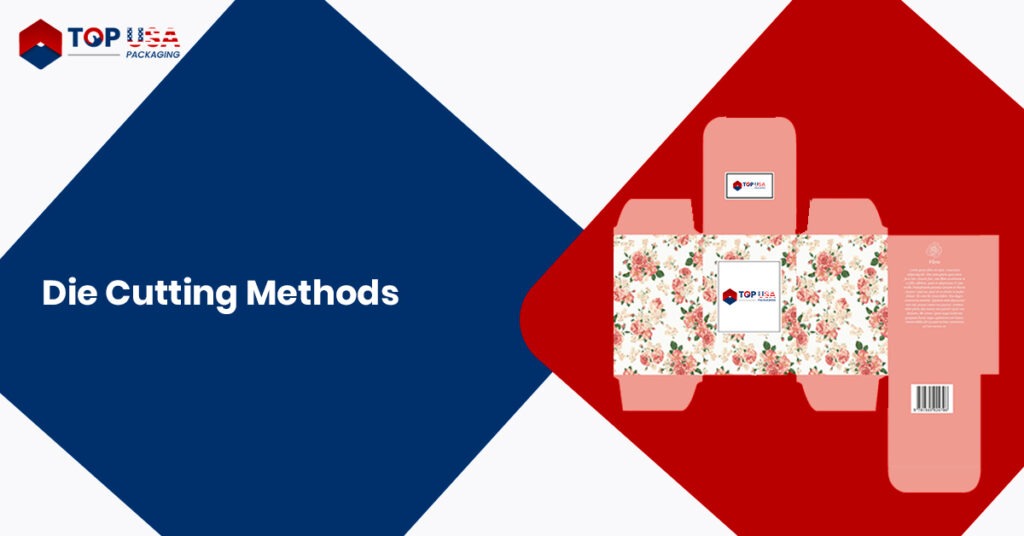
Die-cutting goes beyond its various applications, it utilizes a range of techniques to create truly customized die cut packaging boxes. These techniques open a whole new world of design possibilities and allow for a truly personalized packaging experience. Here’s a closer look at some common die-cutting methods:
- Blanking: This technique ensures precise flatness by cutting out flat material from its outer edge. Imagine using cookie cutters to create perfect shapes from dough.
- Forming: Here, a curved surface is used to shape the raw material. This technique is often combined with drawing to create rounded shapes, like cylindrical boxes.
- Drawing: This method involves stretching a material to a specific length, often used for producing long and slender packaging, like tubes.
- Broaching: This technique tackles thicker or tougher materials by using multiple rows of cutting teeth to achieve the desired shape.
- Coining: This method uses a pressurized force to create small and intricate details in the material, like tiny holes or raised designs.
As you can see from this list, the die-cutting process boasts impressive versatility, working with a wide range of packaging materials to bring your vision to life.
Read Also: Where to Buy Small Milk Cartons in Bulk
Die Cut Packaging Finishing Touches
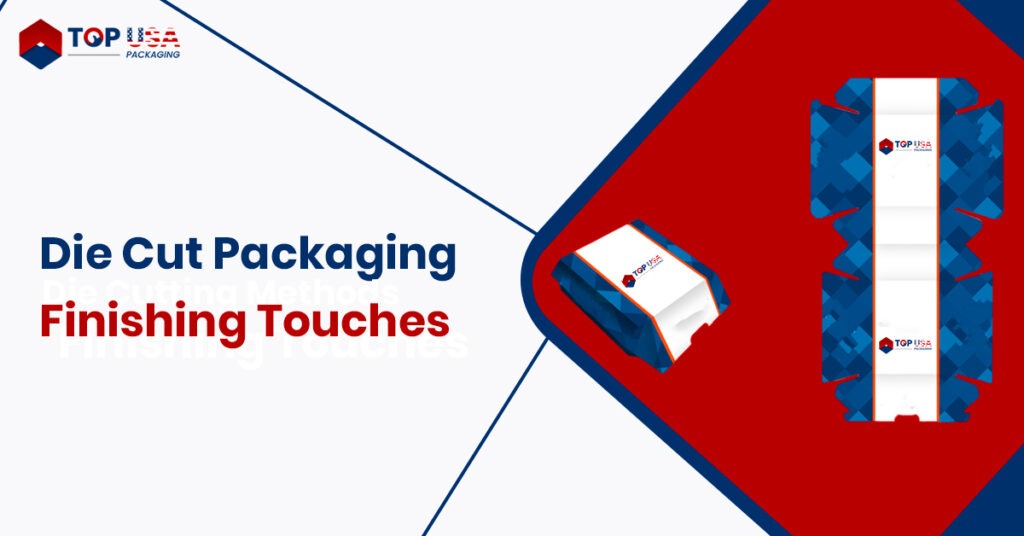
Building on the customization power of die-cutting, businesses can create truly personalized die cut packaging boxes that enhance their brand recognition. While luxury packaging traditionally screams “high-end” but comes with a hefty price tag, die-cutting offers a cost-effective alternative for creating premium, personalized boxes.
Die-cutting unlocks a treasure chest of finishing techniques to further enhance your design. These include options like UV printing for vibrant colors, foil stamping for a touch of elegance, or embossing and debossing to add depth and texture.
One of the biggest benefits of die-cutting is its accessibility for both manufacturers and businesses. While initial setup fees can be higher, they are a one-time investment for your unique design. This makes die-cutting cost-effective for high-volume production runs, ensuring consistent, high-quality design accuracy for each die cut packaging. Most importantly, die-cutting offers a vast array of options, features, and techniques that set custom packaging apart from generic stock boxes. This unleashes your creativity and allows you to design truly unique product packaging boxes.
Also Read: How Much Does a Cereal Box Weigh

